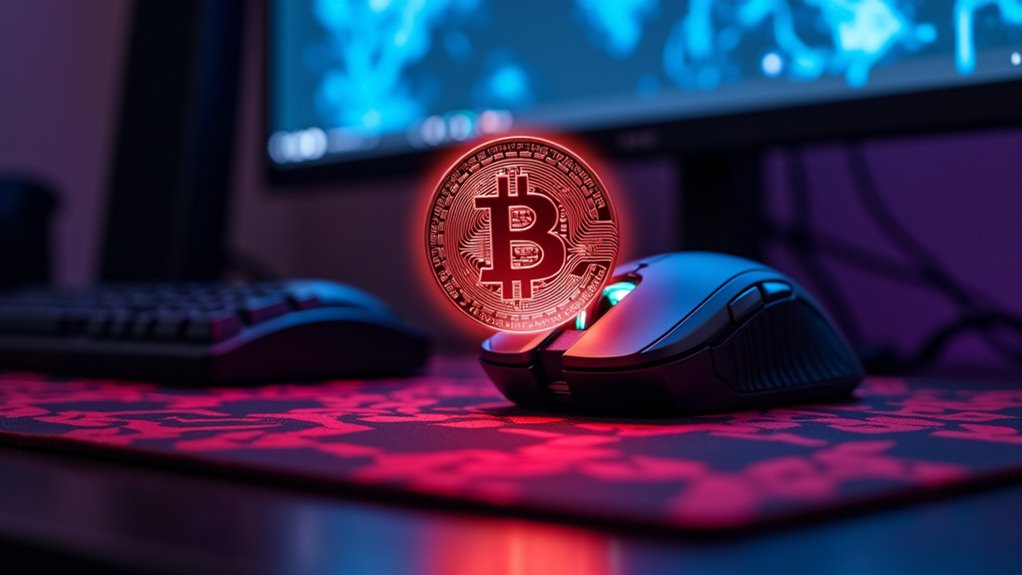Bitcoin’s blockchain is a decentralized digital ledger that records every BTC transaction made – like a public spreadsheet on steroids. No single entity controls it, and it’s practically impossible to hack or tamper with thanks to heavy-duty cryptography. Miners compete to solve complex math puzzles, earning Bitcoin rewards for maintaining the network. Banking, voting systems, and supply chains are now scrambling to adopt this revolutionary tech. The rabbit hole of blockchain innovation runs surprisingly deep.

While most people know Bitcoin as digital money, the real magic happens under the hood with its blockchain technology. This isn’t your grandmother’s checkbook – it’s a decentralized digital ledger that records every single Bitcoin transaction ever made. Think of it as a gigantic, public spreadsheet that everyone can see but nobody can tamper with. No single entity governs it, and that’s exactly the point.
The blockchain is built block by block, like a never-ending game of digital Lego. Each block is packed with recent Bitcoin transactions and linked to the previous one through a unique cryptographic hash – a fancy way of saying a complex mathematical fingerprint. Try messing with any transaction in the chain, and you’ll need to redo every single block that comes after it. Good luck with that. Each block contains approximately 4MB of data for storing transaction information. The system creates a permanent ledger that cannot be altered or deleted.
This system is ridiculously secure, and that’s not just marketing talk. The blockchain uses heavy-duty cryptography to ensure every transaction is legitimate and permanent. Once a transaction is confirmed and added to the chain, it’s there indefinitely. No takebacks, no do-overs. The entire network of computers maintains this ledger collectively, making it practically impossible to hack or manipulate. Users access and manage their bitcoins using cryptographic keys stored securely in digital wallets.
When someone sends Bitcoin, the transaction gets verified by the network through a process called proof-of-work. Miners (computers in the network) compete to solve complex mathematical puzzles, and the victor gets to add the next block to the chain. It’s like a global game of “who can solve this math problem first?” – except the winners get rewarded with Bitcoin.
The beauty of Bitcoin’s blockchain lies in its transparency and reliability. Every wallet can check the blockchain to verify how many bitcoins they possess, and anyone can trace the history of any transaction. This technology has become so revolutionary that industries beyond cryptocurrency are scrambling to adapt it for their own uses. Banking, supply chain management, voting systems – they all want a piece of the blockchain action. And honestly, who can blame them?
Frequently Asked Questions
How Long Does It Take to Mine One Bitcoin Block?
Bitcoin’s protocol is designed to sustain an average block mining time of 10 minutes. The network automatically adjusts mining difficulty every 2016 blocks to guarantee this target remains consistent irrespective of hashrate fluctuations.
Can Bitcoin’s Blockchain Be Hacked or Manipulated?
While Bitcoin’s blockchain is highly secure through decentralization and cryptography, it remains vulnerable to particular attacks like 51% attacks, smart contract exploits, and social engineering, though successful large-scale hacks are extremely rare.
What Happens to Lost Bitcoin Private Keys on the Blockchain?
Lost Bitcoin private keys remain on the blockchain, but the associated funds become permanently inaccessible. The decentralized system prevents recovery, effectively removing these Bitcoins from circulation while maintaining their blockchain record.
How Many Computers Are Currently Running the Bitcoin Blockchain Network?
Approximately 22,003 reachable nodes operate on Bitcoin’s network as per June 2025, with additional non-reachable nodes that validate transactions but don’t accept incoming connections, forming the decentralized blockchain infrastructure.
Does Bitcoin Mining Consume More Electricity Than Traditional Banking Systems?
Traditional banking systems consume more total energy when accounting for all infrastructure, but Bitcoin mining uses vastly more energy per transaction. Direct comparisons are complex due to different operational models and purposes.









